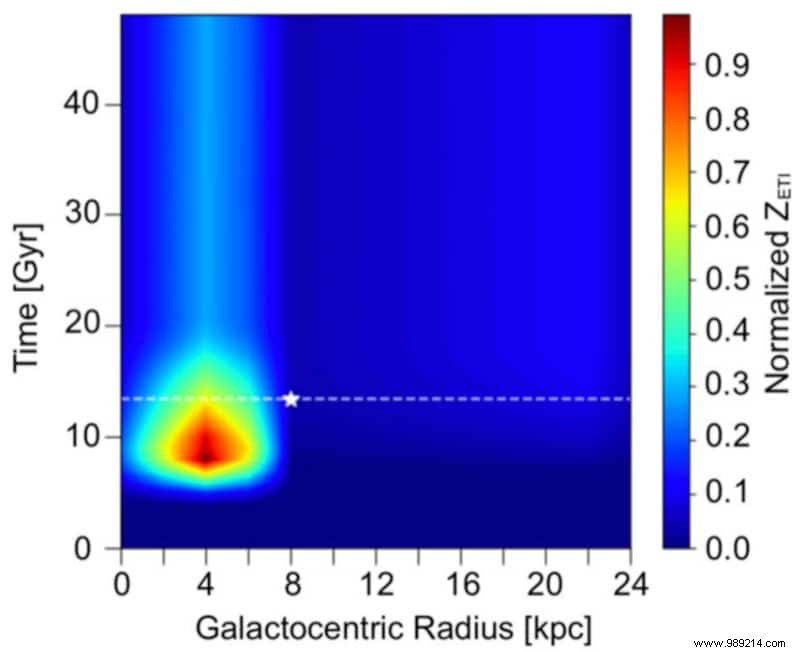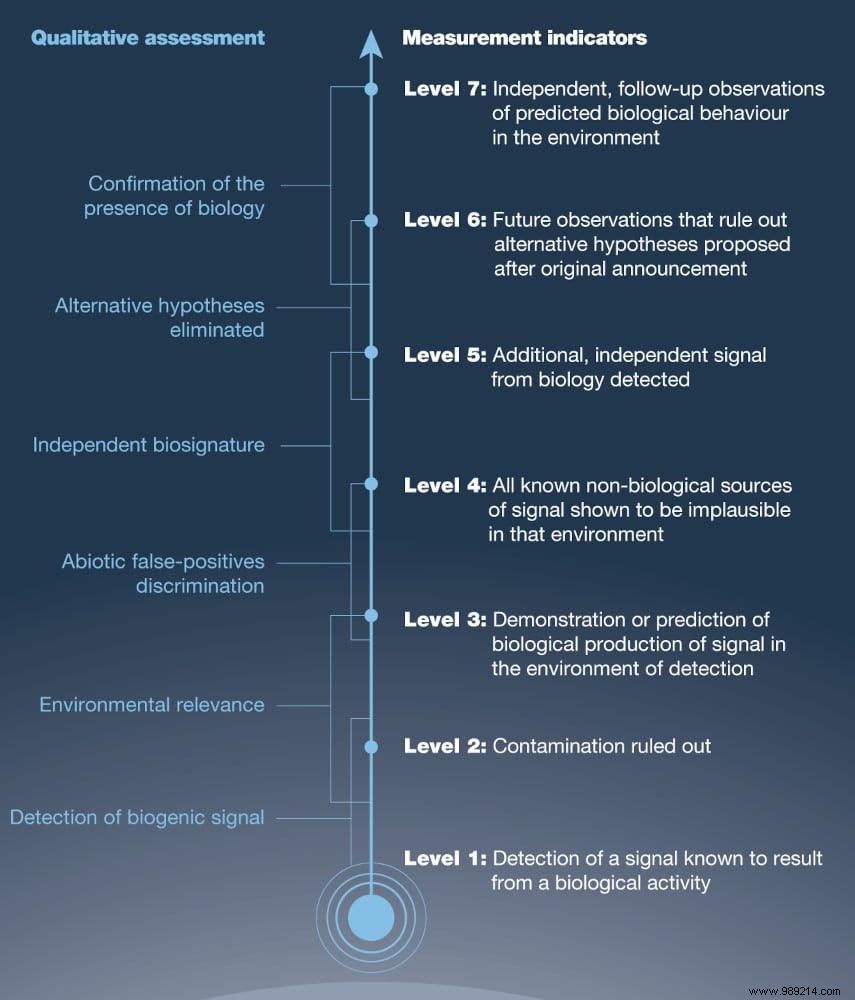In October 1995, a team of astrophysicists from the Observatoire de Haute-Provence discovered the first exoplanet orbiting a star similar to the Sun:51 Pegasi b. Since then, more than 4,500 exoplanets have been confirmed, in nearly 3,400 different planetary systems; several thousand candidate planets are also awaiting confirmation. Among these other worlds, several are rocky, like the Earth, and located in the so-called habitable zone. It is therefore legitimate to wonder if there are other intelligent species in the Universe or if we are definitely alone.
While humanity has been observing the stars for centuries, the question of whether we are alone in the vastness of the Universe remains. The idea has largely inspired (and continues to inspire) science fiction literature and cinema. Most people (including over a third of Americans) believe in extraterrestrials, and an Ipsos poll found that 20% of the world's population believe "aliens" live among us on Earth, disguised as humans!
The chances of finding a life elsewhere remain unknown to this day, but it can still be said that these "chances" are increasing. Since the discovery of the first exoplanets, scientists have constantly determined which worlds are most likely to host a form of life. For example, life as we know it requires liquid water, so an exoplanet too close or too far from its host star is less likely to support living organisms.
Our best chances therefore lie with planets located in the habitable zone. But to date, scientists have not detected any convincing evidence of possible advanced extraterrestrial technology, neither with space telescopes nor via terrestrial observatories - although Avi Loeb has been convinced of the contrary since the object "Oumuama skimmed Earth in 2017. Likewise, we have not detected the slightest trace of life, not even a tiny bacterium (at the same time, we do not have a “universal” definition of the life, which could then take on an unimaginable form). What are our chances of one day discovering extraterrestrial intelligence (ETI)?
To answer this question, Frank Drake - American astronomer and founder of the SETI project - proposed in 1961 a formula to estimate the potential number of extraterrestrial civilizations in our galaxy with which we could come into contact. This number is equal to the product of seven parameters, among which:the number of stars that form each year in our galaxy, the share of stars surrounded by planets, the expectation of the number of potentially life-supporting planets per star , how long advanced extraterrestrial civilizations would emit radio signals in space, etc. Based on the data known at the time, Drake and his collaborators estimated that 10 civilizations could communicate in the Milky Way.
However, it is particularly difficult to estimate each of these parameters with certainty, and even today, scientists cannot agree on the values to use. In 2013, Sara Seager, an astronomer and planetary scientist at MIT, proposed a modified version of the Drake equation, reduced to six factors, focusing on the presence of any extraterrestrial life (and not on the capacity of these forms to communicate via radio signals); this version notably includes the fraction of so-called "silent" stars and the fraction of planets on which life produces detectable gaseous signatures.

Focusing on M-type stars, such as red dwarfs — which are the most numerous stars in the Universe, but are smaller and less luminous than the Sun — Seager estimated values for each term of his formula, the result of which ultimately suggested that two planets "inhabited" by some form of life could reasonably be discovered within the next decade. But this estimate dates from 2013 and we are slowly approaching the end of the "decade" mentioned by the planetary scientist...
The James Webb Space Telescope, which should be launched on December 22, could nevertheless detect such biomarkers in the atmospheres of Earth-sized exoplanets. Astronomers have found that 6% of all red dwarf stars have an Earth-sized planet in the habitable zone. Webb and other future telescopes could detect signs of an atmosphere like ours (composed of oxygen, carbon dioxide, methane), or detect signs of photosynthesis or even any other molecule suggesting the presence of an animal life.
“Intelligent” and technologically advanced life could, in turn, create atmospheric pollution – as on our planet – which could also be detected by future observation instruments. In summary, a sufficiently powerful instrument could allow us to determine whether we are dealing with advanced life or a much simpler form of life.
Caltech scientists have also made a statistical estimate of the occurrence of an ETI in our galaxy. Their work was published earlier this year in the journal Galaxies . In particular, they determined where and when life is most likely to occur in the Milky Way and identified the most important factor affecting its prevalence:the tendency of intelligent creatures to self-destruct. Previous studies indeed show that the technological advancements of a civilization inevitably lead to complete destruction and biological degeneration.
They found that the likelihood of life emerging, based on known factors, peaked in an annular region located about 13,000 light-years from the galactic center and 8 billion years after the galaxy formed — the complex life diminishing temporally and spatially from this peak; it would therefore be too young to be observed. Earth, by comparison, is about 25,000 light-years from the galactic center, and human civilization appeared on the planet's surface about 13.5 billion years after the formation of the Milky Way. “Our results may imply that intelligent life may be common in the galaxy, but is still young […]. [They] also suggest that our location on Earth is not in the region where most intelligent life resides, and that SETI practices need to be closer to the inner galaxy, preferably in the ring at 13,000 light years from the galactic center write the researchers.

Several experts agree that our chances of finding microbial extraterrestrial life forms are much higher than those of detecting an ETI. And if research focuses on rocky worlds similar to Earth, researchers have recently identified a new class of extraterrestrial worlds, which prove to be particularly favorable to the development of microbial life:the so-called "hycean" planets, which are up to 2.5 times larger than Earth and covered by huge oceans of liquid water under a thick, hydrogen-rich atmosphere. These planets appear incredibly abundant throughout the galaxy and could harbor life similar to the "extremophile" organisms that thrive in some of Earth's harshest environments, the team members said.
As small as our chances of coming into contact with an extraterrestrial life form, intelligent or not, it is however essential to anticipate how this potential encounter will be reported to the public. Among those who firmly believe in the existence of an ETI, many imagine that these beings evolve in utopian societies, free from war, disease and death (or any other problem facing our world) and would potentially be capable of eradicating these problems on our planet. These people are likely to be truly frustrated if they learn one day that the extraterrestrial life so fantasized is nothing but a kind of amoeba...
In a recent article published in Nature , a NASA team has called on the scientific community to establish a new framework for the search for extraterrestrial life, saying "our generation could realistically be the ones to discover evidence of life beyond Earth." Earth ". The authors, including Jim Green, the agency's chief scientist, propose creating a scale to contextualize the importance of new findings related to this research — a way to prevent small steps taken from appearing as steps. giant in the eyes of the public.

“We need a better way to share the excitement of our discoveries and demonstrate how each discovery builds on the next, so we can bring the public and other scientists on the journey says Mary Voytek, NASA Astrobiology Program Manager and co-author of the study.
Each level of this scale would correspond to a level of confidence, level 7 being the maximum, attesting that scientists are certain to have detected life. Will we ever reach this level 7? For Dr. Ravi Kopparapu, who studies the habitability and life potential on exoplanets at the Goddard Space Flight Center, it's a no-brainer:"It's not a question of 'if', it's a question of 'when' we will find life on other planets. I am sure that in my lifetime, in our lifetime, we will know if there is life on other worlds he said.